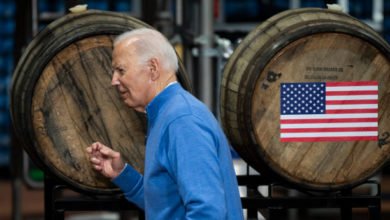How Will the Fed React to the Latest Inflation, Jobs Data?
The Bureau of Labor Statistics just released the Consumer Price Index for March. Prices were nearly unchanged, increasing only 0.1%. That reduced the inflation rate for the last 12 months to 5%. Also, last week, the Bureau of Labor Statistics (BLS) reported that 236,000 jobs were added in March.
How will the Federal Reserve react to these latest numbers?
Inflation has fallen from an annual rate of 9.1% in June 2022 to the current annual rate of 5%. While that number is well above the target set by the Fed, the trend is very encouraging. The Fed will look at this data when it meets again on May 2. Fed policymakers will decide whether to keep interest rates at the current level or continue to raise them.
The March CPI number is encouraging. In January and February, the CPI rose 0.5% and 0.4%, respectively. If that pattern continued for the entire year, the annual inflation rate would be about 5-1/2%, which is much above the Fed target. But the March 0.1% CPI increase indicates inflation is falling.
Or is it?
The core CPI, which excludes food and energy, was up 0.4% in March, which increased the annual core inflation rate to 5.6%. That core number has been stubbornly high for the last year. That means energy and food prices were increasing at a lower rate than the rest of consumer prices. But what will happen in the future?
It is very difficult to forecast food prices because there are so many variables that impact those prices, like weather and crop yields. It is simpler to forecast energy prices. Energy prices fell in March, but they have increased so far in April.
OPEC has decided to cut oil production with the goal of getting oil prices above $90 per barrel and perhaps as high as $100 per barrel. As soon as that announcement was made, oil prices jumped from $70 per barrel to over $80. So far in April, gasoline prices have increased by 10%. That will result in a much higher CPI number when the April data is released in mid-May.
The jobs number in March also slowed. In January 517,000 jobs were added. In February 311,000 jobs were created. And in March 236,000. While the number of new jobs is falling, it appears that the economy is still growing.
Usually, a jobs number greater than 200,000 means the economy is growing at least by 2% assuming normal productivity increases. Most economists are forecasting economic growth in the first quarter of this year to be about 1 ½% to 2%.
That’s less than the 3.2% growth in the third quarter 2022 and the 2.7% growth in the fourth quarter. Looking at the CPI data, the jobs numbers and economic growth numbers, it appears that the economy is slowing.
The Fed is hoping for a soft landing, meaning it believes it can reduce inflation without causing a recession.
That will be difficult. With gas prices rising and core inflation remaining stubbornly high, the Fed will be forced to continue its pattern of raising interest rates. When it meets again in May, it will probably raise rates by 25 basis points, bringing the Federal Funds Rate to between 5% and 5.25%. It is unclear if that will be enough to permanently reduce inflation.
I have said for the last year that the Federal Funds Rate will have to rise to at least 6% to finally bring the inflation down to the level that the Fed wants. The Fed is moving cautiously to try to balance the reduction in inflation with a possible recession.
The Fed disagrees with my analysis and says that the rate increase in May and perhaps one more increase later this year, should be enough to reduce inflation.
Let’s see if the Fed can get the soft landing that it seeks.
Agree/Disagree with the author(s)? Let them know in the comments below and be heard by 10’s of thousands of CDN readers each day!




